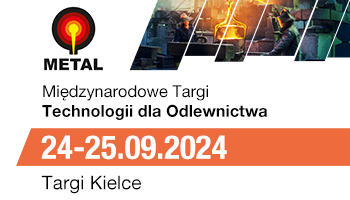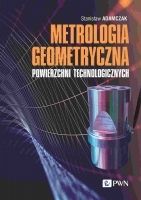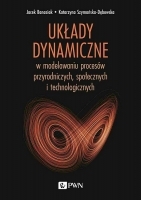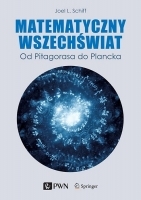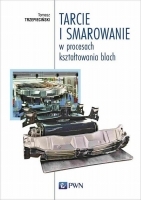Numeryczne badanie wpływu obciążenia zewnętrznego na siły w śrubach w połączeniu wielośrubowym *
Numerical investigation on the effect of externally exerted loads on particular bolts forces in the multi-bolted flange joint
Mechanik nr 12/2015 - CAD/CAM
STRESZCZENIE: Przedstawiono modelowanie i obliczenia połączenia wielośrubowego charakteryzującego się niesymetrycznym rozmieszczeniem śrub. Zaprezentowano fragment badań dotyczących rozwoju metod modelowania tego typu połączeń. Zbadano wpływ sposobu modelowania pojedynczego złącza śrubowego na siły robocze w śrubach podczas zewnętrznego obciążenia połączenia wielośrubowego. Przedstawiono analizę obciążenia połączenia wielośrubowego na przykładzie wybranego modelu utworzonego w konwencji metody elementów skończonych (MES).
SŁOWA KLUCZOWE: połączenie wielośrubowe, modelowanie MES, napięcie wstępne, analiza obciążenia
ABSTRACT: The paper deals with modelling and calculations of a multi-bolted joint noted for irregular arrangement of bolts. A fraction of research work on development of the methods of modelling these type of joints is presented. The effect of the method selected to model a single bolted joint on actual forces in the bolts during external loading of the multi-bolted flanged joint is examined. Analysis of the load charged on multi-bolted flange joint for a selected model created by means of the finite element method (FEM) is performed.
KEYWORDS: multi-bolted joint, FE-modelling, preload, load analysis
BIBLIOGRAFIA / BIBLIOGRAPHY:
- Abid M., Khan Y.M. “The effect of bolt tightening methods and sequence on the performance of gasketed bolted flange joint assembly”. Structural Engineering and Mechanics. Vol. 46, No. 6 (2013): pp. 843÷852.
- Adams V., Askenazi A. “Building better products with Finite Element Analysis”. Santa Fe: OnWord Press, 1999.
- Bai R., Chan S.-L., Hao J.-P. “Improved design of extended endplate connection allowing for prying effects”. Journal of Constructional Steel Research. Vol. 113 (2015): pp. 13÷27.
- Bois C. et al. “An analytical model for the strength prediction of hybrid (bolted/bonded) composite joints”. Composite Structures. Vol. 97 (2013): pp. 252÷260.
- Caliskan M. “Evaluation of bonded and bolted repair techniques with finite element method”. Materials & Design. Vol. 27, No. 10 (2006): pp. 811÷820.
- Croccolo D., De Agostinis M., Vincenzi N. “Failure analysis of bolted joints: Effect of friction coefficients in torgue-preloading relationship”. Engineering Failure Analysis. Vol. 18, No. 1 (2011): pp. 364÷373.
- Ekh J., Schön J. “Load transfer in multirow, single shear, composite-to-aluminium lap joints”. Composites Science and Technology. Vol. 66, No. 7–8 (2006): pp. 875÷885.
- Grudziński P. “Determination of joint diagrams for a foundation bolted joint with the bolt anchored in a polymer plastic. Part 1: Joint diagram for the assembly state”. Archives of Mechanical Technology and Automation. Vol. 32, No. 3 (2012): pp. 35÷47.
- Grzejda R. “Determination of bolt forces for the assembly condition of a bolted flange connection”. Archives of Mechanical Technology and Automation. Vol. 33, No. 2 (2013): pp. 3÷12.
- Grzejda R. “Determination of bolt forces for the operational state of a bolted flange connection”. Advances in Manufacturing Science and Technology. Vol. 37, No. 3 (2013): pp. 73÷83.
- Grzejda R. „Modelowanie MES śrub w połączeniach śrubowych na etapie napinania wstępnego”. Mechanik. R. 87, nr 8–9 (2014): s. 672÷675.
- He Z., Wang Q. “The study of bolt up sequence influence of the bolted assembly structure contact stiffness”. Proc. of the 2015 International Conference on Intelligent Systems Research and Mechatronics Engineering. Atlantis Press, Zhengzhou, China, 2015: pp. 1627÷1630.
- Juvinall R.C., Marshek K.M. “Fundamentals of machine component design”. Hoboken: John Wiley & Sons, 2006.
- Kelly G. “Load transfer in hybrid (bonded/bolted) composite singlelap joints”. Composite Structures. Vol. 69, No. 1 (2005): pp. 35÷43.
- Kim J., Yoon J.-C., Kang B.-S. “Finite element analysis and modeling of structure with bolted joints”. Applied Mathematical Modelling. Vol. 31, No. 5 (2007): pp. 895÷911.
- Kumakura S., Saito K. “Tightening sequence for bolted flange joint assembly”. Analysis of bolted joints, Proc. of the 2003 ASME Pressure Vessels and Piping Conference. ASME, Cleveland, USA, 2003: pp. 9÷16.
- Latour M., Piluso V., Rizzano G. “Experimental analysis of innovative dissipative bolted double split tee beam-to-column connections”. Steel Construction. Vol. 4, No. 2 (2011): pp. 53÷64.
- Matachowski F. „Projektowanie śrubowych połączeń kołnierzowych w świetle normy Eurocode 3”. Mechanik. R. 81, nr 2 (2008): s. 119÷121.
- Mathan G., Siva Prasad N. “Studies on gasketed flange joints under bending with anisotropic Hill plasticity model for gasket”. International Journal of Pressure Vessels and Piping. Vol. 88, No. 11–12 (2011): pp. 495÷500.
- Midas NFX Analysis Manual, 2014.
- Montgomery J. “Methods for modeling bolts in the bolted joint”. Proc. of the ANSYS 2002 User’s Conference. Pittsburgh, USA, 2002.
- Montgomery J. “Modeling multi-bolted systems”. Proc. of the ANSYS 2006 User’s Conference. Pittsburgh, USA, 2006.
- Murali Krishna M., Shunmugam M.S., Siva Prasad N. “A study on the sealing performance of bolted flange joints with gaskets using finite element analysis”. International Journal of Pressure Vessels and Piping. Vol. 84, No. 6 (2007): pp. 349÷357.
- Nagata S. et al. “Finite element stress analysis for leak tests of pipe flange connections subject to internal pressure and bending moment”. Computer technology and bolted joints, Proc. of the ASME 2011 Pressure Vessels and Piping Division Conference. ASME, Baltimore, USA, 2011.
- Nagata S., Matsumoto M., Sawa T. “Bolt load changes due to internal pressure in gasketed flange connections”. Analysis of bolted joints, Proc. of the 2003 ASME Pressure Vessels and Piping Conference. ASME, Cleveland, USA, 2003: pp. 47÷52.
- Nechache A., Bouzid A.-H. “Creep analysis of bolted flange joints”. International Journal of Pressure Vessels and Piping. Vol. 84, No. 3 (2007): pp. 185÷194.
- Olmedo Á., Santiuste C. “On the prediction of bolted single-lap composite joints”. Composite Structures. Vol. 94, No. 6 (2012): pp. 2110÷2117.
- Oskouei R.H., Chakherlou T.N. “Reduction in clamping force due to applied longitudinal load to aerospace structural bolted plates”. Aerospace Science and Technology. Vol. 13, No. 6 (2009): pp. 325÷330.
- PN-EN 1591-1: 2014-04. Kołnierze i ich połączenia. Zasady projektowania połączeń kołnierzowych okrągłych z uszczelką. Część 1: Obliczanie.
- PN-EN ISO 7091: 2003. Podkładki okrągłe. Szereg normalny. Klasa dokładności C.
- Piaseczny L. “A simplification of machinery seating on an example of marine diesel engines”. TEKA Commission of Motorization and Energetics in Agriculture. Vol. 6 (2006): pp. 109÷116.
- Takaki T., Fukuoka T. “Methodical guideline for bolt-up operation of pipe flange connections (A case using sheet gasket and spiral wound gasket)”. Analysis of bolted joints, Proc. of the 2003 ASME Pressure Vessels and Piping Conference. ASME, Cleveland, USA, 2003: pp. 23÷30.
- Tenma K. et al. “Evaluation of sealing performance and FEM calculations in bolted flange connections with ring joint gasket subjected to internal pressure”. Computer technology and bolted joints, Proc. ofthe ASME 2011 Pressure Vessels and Piping Division Conference. ASME, Baltimore, USA, 2011.
- Terada S., Nishihara T., Suzuki T. “Comparison on mechanical behavior of bolted flanges per old and new Section VIII Division 2”. Computer technology and bolted joints, Proc. of the ASME 2011 Pressure Vessels and Piping Division Conference. ASME, Baltimore, 2011.
- Tirovic M., Voller G.P. “Interface pressure distributions and thermal contact resistance of a bolted joint”. Proceedings The Royal Society A – Mathematical, Physical & Engineering Sciences. Vol. 461, Iss. 2060 (2005): pp. 2339÷2354.
- Wang Y.Q., Zong L., Shi Y.J. “Bending behavior and design model of bolted flange-plate connection”. Journal of Constructional Steel Research. Vol. 84 (2013): pp. 1÷16.
- Williams J.G. et al. “Analysis of externally loaded bolted joints: Analytical, computational and experimental study”. International Journal of Pressure Vessels and Piping. Vol. 86, No. 7 (2009): pp. 420÷427.




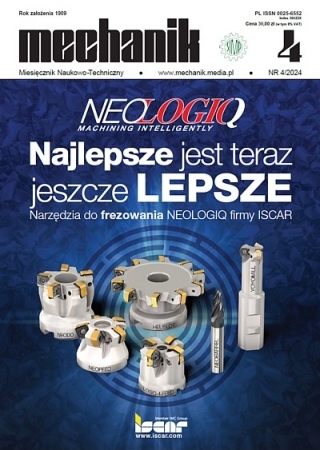


.gif)

